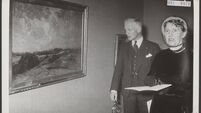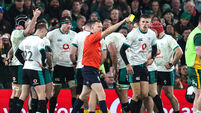Knut’s entire species needs our help
Berliners have a soft spot for bears. The animals have been a symbol of their town since the 13th Century and the name Berlin derives from bär, German for bear. Fans will converge on Berlin Zoo for Knut’s big day, but the celebrations will not be confined to citizens; visitors are expected from far and wide. The birthday boy caught the public’s imagination on December 5 last, when the zoo announced the birth of two cubs, the first ones to be born there in 30 years. Their mother Tosca, a 20-year-old former circus performer from East Germany, proved to be a very bad mammy. As far as she was concerned, the new arrivals were a nuisance and she rejected them. Lars, the cubs’ 13-year-old daddy from Hellabrun Zoo in Munich, was no help either; polar bear fathers take no interest whatsoever in their offspring.
When one baby died, zoo staff intervened to save the second one. Christened Knut after King Canute, the Viking who ruled Britain in the 11th century, he was kept in an incubator for 44 days. Then, keeper Thomas Dörflein agreed to become his adoptive mother, sleeping beside the little bear each night and bottle-feeding him six times a day. Encouraged by Thomas, he learned to walk and swim.
As soon as he was old enough, Knut was allowed to meet the public. Newspapers and television networks around the world picked up the story of the little eisbär, “ice bear”, as the species is known in Germany. Demand for information about Knut became insatiable. The Berlin Tagespiegel newspaper began publishing a regular column and Knut even made it onto the cover of Vanity Fair. A Knut website has been established and, in his own daily blog, he discusses his feelings and experiences in the zoo. With the blog translated into eight languages, the community of Knut bloggers now extends throughout the world. Admissions to Berlin Zoo broke all previous records. There were even death threats, a sure sign that Knut had attained true celebrity status.
But the decision to save Knut has been controversial. Cubs remain with their mothers for two to three years in the wild, where they develop complex family relationships. Thomas, for all his dedication, is no substitute for the little bear’s mother. Polar bears are among the world’s most dangerous animals and physical contact with keepers is only possible when cubs are small. Knut, the critics claim, will be emotionally deprived and should, they think, have been “put down” or allowed to die like his brother. Zoo vets don’t agree; polar bears, they argue, lead solitary lives and need neither company nor physical contact. In any case, Thomas can continue his liaison with Knut from outside the cage. To help the cub adjust to an independent lifestyle, he has been weaned off bottled milk and left on his own for extended periods. Knut will meet other bears in due course, but not in Berlin. Taking him elsewhere will ensure that, if he becomes a daddy, inbreeding will be avoided and the bear gene pool kept as diverse as possible.
That one little bear should command so much affection and goodwill is heartening but it’s Knut’s entire species which really needs support. Polar bears hunt seals under the ice cap. Now, as the Earth heats up, the ice is melting and the cap gets smaller every year. Bears can’t catch enough prey and many are starving. The extinction of the polar bear would be an environmental catastrophe. This extraordinary animal is unique and perfectly adapted to its Arctic environment.
Polar bears, for example, are not white, but black. Black bodies absorb heat, whereas white surfaces reflect it. White is the natural colour of hair and the bear’s coat serves as camouflage against a background of snow and ice.
Each strand of hair acts like a little fibre-optic cable, channelling the sun’s rays down to black skin underneath. Only short-waved light rays are absorbed in this way but these include the ultraviolet ones which can penetrate cloud cover.
Ultra-violet light damages eyes but the bear has a tool to prevent this — a nictitating membrane — which is a semi-transparent screen which can be drawn across the eye.













